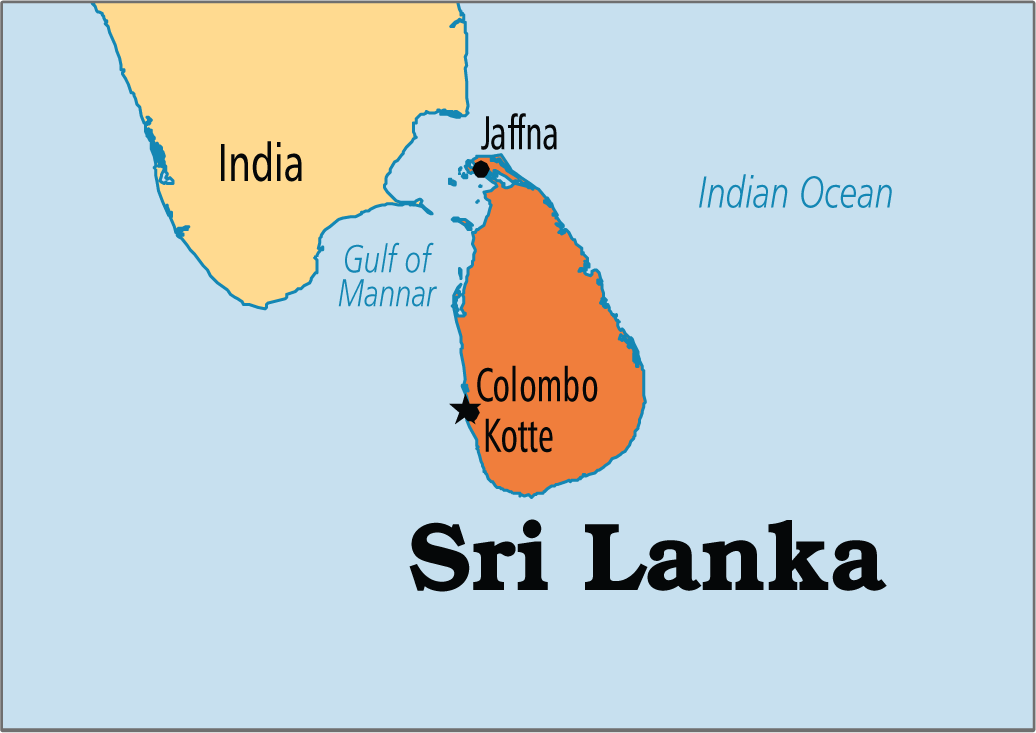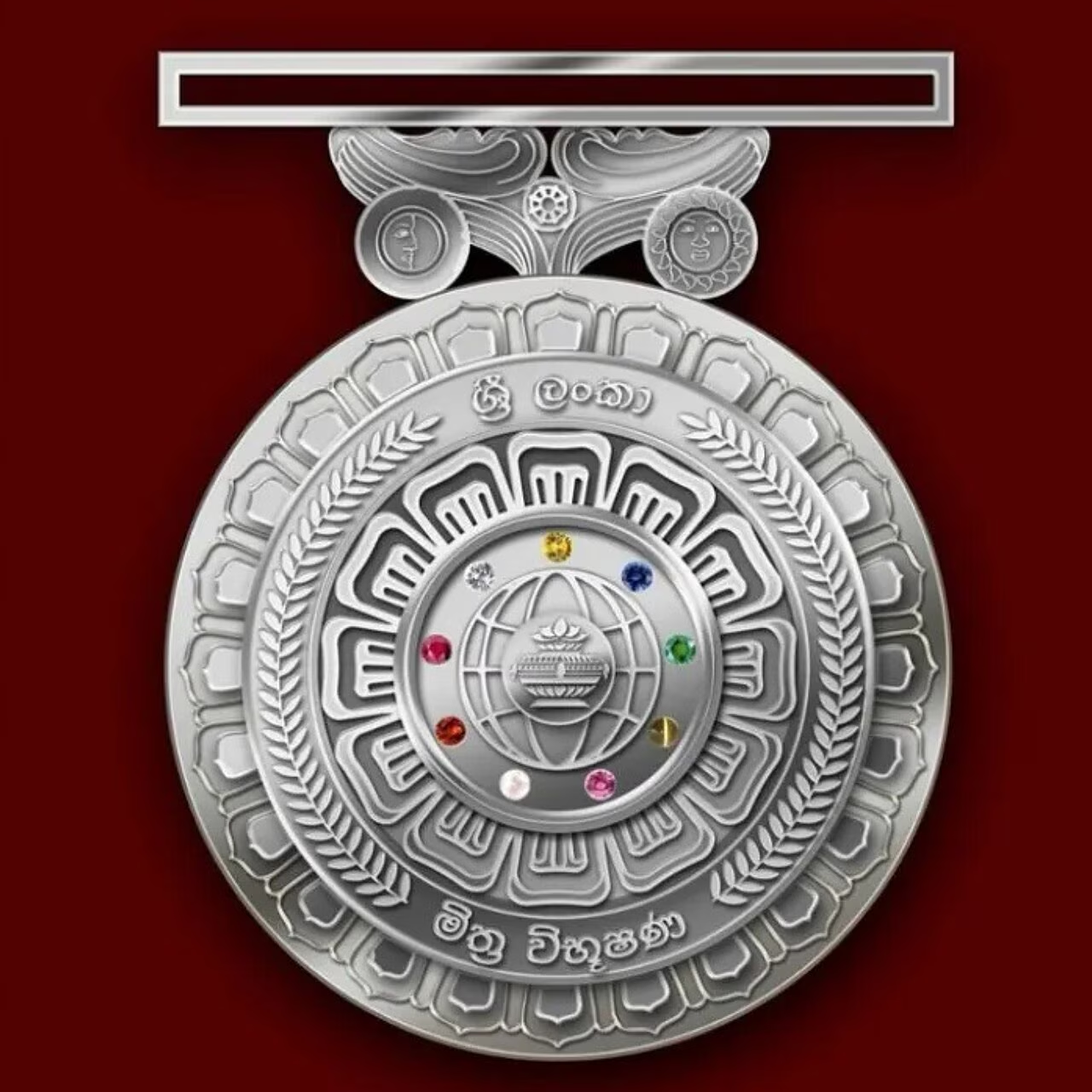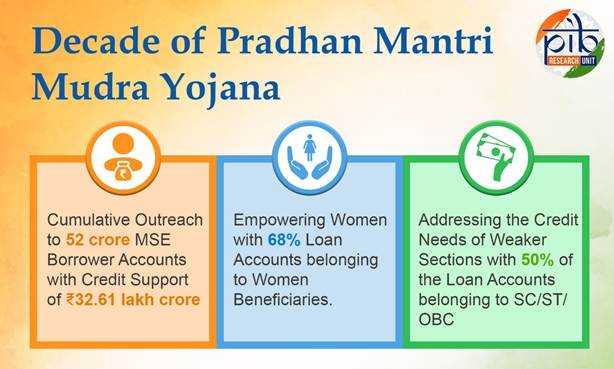International Relations
India-Sri Lanka Relations
For Prelims: South Asian Association for Regional Cooperation, Vesak Day, Foreign Direct Investment, SLINEX, MITRA SHAKTI, Belt and Road Initiative
For Mains: India-Sri Lanka relations and challenges, India’s Neighbourhood First policy
Why in News?
Prime Minister Narendra Modi’s visit to Sri Lanka resulted in the signing of 7 memorandums of understanding (MoUs) with the Sri Lankan President. This visit underscores India's commitment to its 'Neighbourhood First Policy' and aligns with the 'MAHASAGAR' vision aimed at fostering regional security and growth
What are the Key Highlights of the India-Sri Lanka Bilateral Talks?
- Sri Lanka Mitra Vibhushana: Prime Minister Narendra Modi was awarded the ‘Sri Lanka Mitra Vibhushana’, the country’s highest civilian honour.
- The award includes a citation and a silver medal adorned with Navarathna (nine Sri Lankan gems). The medal features a Pun Kalasa (symbol of prosperity), Sun and Moon (eternity), and a Dharma Chakra, reflecting the shared Buddhist heritage.
- Defence Cooperation: India and Sri Lanka signed a landmark 5-year Defence MoU, an umbrella agreement aimed at structuring joint exercises, maritime surveillance, and defence industry collaboration.
- Sri Lankan reaffirmed Sri Lanka’s commitment to ensuring that its territory will not be used against India’s interests.
- Energy and Infrastructure: The two sides agreed on the India-Sri Lanka grid interconnection for electricity trade.
- Additionally, a tripartite MoU involving the United Arab Emirates was signed to develop Trincomalee (Sri Lanka) as an energy hub, including the construction of a multi-product energy pipeline.
- Development and Finance: India also converted over USD 100 million in loans into grants and reduced interest rates on other loans to support Sri Lanka’s debt restructuring.
- Prime Minister Narendra Modi launched key projects in Sri Lanka, including the refurbished Maho-Omanthai railway line (supported by Indian assistance of USD 91.27 million), the Sampur Solar Power Project, and a solar rooftop initiative for 5,000 religious sites in Sri Lanka (with India’s credit assistance of USD 17 million), generating 25 MW of green energy.
- Cultural and Religious Diplomacy: The PM announced that relics of Lord Buddha found in Gujarat’s Aravali would be sent to Sri Lanka for exposition during the Vesak Day celebrations in May 2025.
How have Relations Between India and Sri Lanka Been?
- Trade and Commerce: India is one of Sri Lanka’s top trade partners, and vice versa within South Asian Association for Regional Cooperation (SAARC).
- The 1998 Free Trade Agreement (FTA) boosted bilateral trade to USD 5.5 billion in 2023–24, with India’s exports at USD 4.1 billion and Sri Lanka’s at USD 1.4 billion.
- India is a key Foreign Direct Investment (FDI) contributor to Sri Lanka, with cumulative investments of USD 2.25 billion till 2023.
- Tourism and Connectivity: India is the leading source of tourists to Sri Lanka (around 4.16 lakh in 2024 (~20% of 2.05 million total).
- Sri Lanka’s adoption of India’s UPI and use of the rupee for trade settlement boost fintech connectivity.
- Development Cooperation: India has extended over USD 7 billion in credit and USD 780 million in grants to Sri Lanka.
- During Sri Lanka’s 2022 crisis, India provided nearly USD 4 billion in aid, and India also supported Sri Lanka during the Covid-19 pandemic with vaccines and medical supplies.
- Defence & Security Cooperation: Key bilateral exercises include SLINEX (Navy) and MITRA SHAKTI (Army), held alternately in both countries.
- India acts as a 'first responder' for Sri Lanka in the field of Humanitarian Assistance and Disaster Relief, as seen in the MV XPress Pearl incident (2021), a container ship fire disaster causing significant environmental damage.
- Cultural and Civilizational Ties: Deep-rooted Buddhist and Hindu ties, including the sacred Jaya Sri Maha Bodhi tree, highlight strong cultural bonds. India supports temple restoration and religious tourism under its cultural diplomacy efforts.
- Indian Community: Sri Lanka hosts around 10,000 People of Indian Origin (PIOs) and about 1.6 million Indian-Origin Tamils (IOTs).
Note: The Jaya Sri Maha Bodhi tree in Sri Lanka is believed to have grown from a branch of the Bodhi Tree (Bihar) under which Buddha attained enlightenment. It was brought by Sanghamitta, daughter of Emperor Ashoka.
Why are India and Sri Lanka Important to Each Other?
- India's Importance to Sri Lanka: India has shown strong commitment to Sri Lanka’s economic recovery, providing an unprecedented USD 4 billion in aid and being the first creditor to assure support for the IMF bailout programme.
- India is Sri Lanka’s largest trade partner, leading FDI source, and top tourist contributor.
- India extended grants and concessional loans; key infrastructure and digital projects (e.g. housing, Kankesanthurai Port, Digital ID).
- Sri Lanka's Importance to India: Located near key Indian Ocean trade routes (Palk Strait), Sri Lanka is essential to India’s maritime security and energy lifelines.
- Sri Lanka has a central place in India’s ‘Neighbourhood First’ policy and MAHASAGAR (Mutual and Holistic Advancement for Security and Growth Across Regions) vision.
- Sri Lanka acts as a buffer in countering Chinese strategic encirclement through the Belt and Road Initiative (BRI) and port developments (e.g., Hambantota).
- Additionally, Sri Lanka has supported India’s candidature for a non-permanent seat at the UN Security Council (2028–29).
- As an active member of regional platforms like BIMSTEC, Indian Ocean Rim Association, Sri Lanka plays a key role in regional cooperation.
What are the Challenges in India-Sri Lanka Relations?
- Chinese Presence in Sri Lanka: China’s BRI projects, like the 99-year lease of Hambantota Port (Sri Lanka), raise Indian concerns over strategic encirclement.
- Frequent visits by Chinese surveillance ships near Indian waters highlight geopolitical sensitivities.
- Katchatheevu Island: The recurring arrests of Indian fishermen near Katchatheevu Island by the Sri Lankan Navy, over alleged maritime boundary violations, continue to remain a pressing issue.
- Katchatheevu Island, ceded by the Indian administration to Sri Lanka under 1974 Indo-Sri Lankan agreement, which barred fishing in each other’s Exclusive Economic Zones, however, while the pact permitted limited access for Indian fishermen, differing interpretations of its terms have led to persistent disputes.
- Ethnic Reconciliation: The 13th Amendment to the Constitution of Sri Lanka was enacted in 1987 following the Indo-Sri Lanka Accord.
- It aimed to devolve powers to provincial councils, particularly in Tamil-majority areas. However, Sri Lanka's failure to fully implement this amendment, especially in the Tamil-majority Northern and Eastern Provinces, is seen as a disregard for Tamil political rights.
- Sinhala nationalists oppose devolution, while Tamil groups demand broader autonomy, placing India in a diplomatic bind
- Domestic Political Sensitivities: Domestic political narratives significantly influence foreign policy in both India and Sri Lanka. In India, Tamil Nadu plays a crucial role in shaping policy toward Sri Lanka.
- Conversely, in Sri Lanka, certain political factions, particularly leftist parties, have historically exploited anti-India sentiments.
What Can be Done to Enhance India-Sri Lanka Relations?
- Technology for Economic Growth: Sri Lanka’s growing IT sector offers an opportunity for India to invest in and integrate its services with Sri Lanka’s digital economy.
- Investment in Renewable Energy: India’s expertise in solar and wind energy can help Sri Lanka reduce its dependence on fossil fuels and develop sustainable energy infrastructure.
- Economic and Trade Cooperation Agreement (ETCA) Implementation: Swift implementation of ETCA can reduce trade barriers and boost India-Sri Lanka bilateral trade.
- Enforcing Maritime Regulations: Enhanced patrolling along the International Maritime Boundary Line (IMBL) and a dedicated Joint Working Group can help curb illegal fishing and ensure continuous dialogue.
|
Drishti Mains Question: What are the challenges in India-Sri Lanka bilateral relations? Suggest a roadmap for deepening the partnership. |
UPSC Civil Services Examination, Previous Year Questions (PYQs)
Prelims
Q1. Elephant Pass, sometimes seen in the news, is mentioned in the context of the affairs of which one of the following? (2009)
(a) Bangladesh
(b) India
(c) Nepal
(d) Sri Lanka
Ans: (d)
Mains
Q2. In respect of India-Sri Lanka relations, discuss how domestic factors influence foreign policy. (2013)
Q3. ‘India is an age-old friend of Sri Lanka.’ Discuss India's role in the recent crisis in Sri Lanka in the light of the preceding statement. (2022)

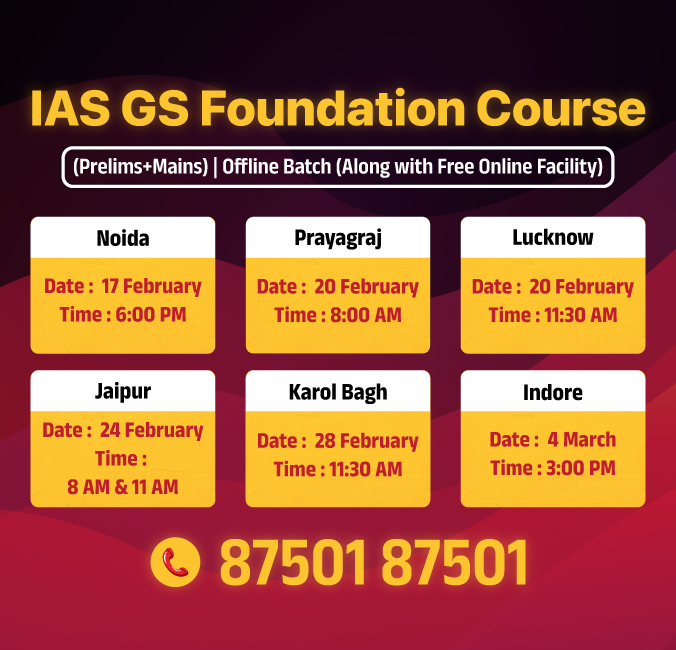
Internal Security
India’s Push for Tech Driven Border Security
For Prelims: Comprehensive Integrated Border Management System (CIBMS), Vibrant Villages Programme, Border Area Development Programme, Integrated check posts (ICPs), Forest (Conservation) Amendment Act, 2023
For Mains: Border Security– Technological Integration, Need, Related Initiatives, Challenges and Way Forward
Why in News?
During a visit to Kathua, Jammu & Kashmir, the Union Home Minister announced plans to bring the entire India-Pakistan border under comprehensive electronic surveillance within four years.
- The move follows the March 2025 terror attack near Kathua, which underscored the need for advanced, technology-driven border security measures.
- As part of the initiative, anti-drone systems, tunnel detection systems, and High-Mast Lighting and Watchtowers will be key areas of development to enhance border security.
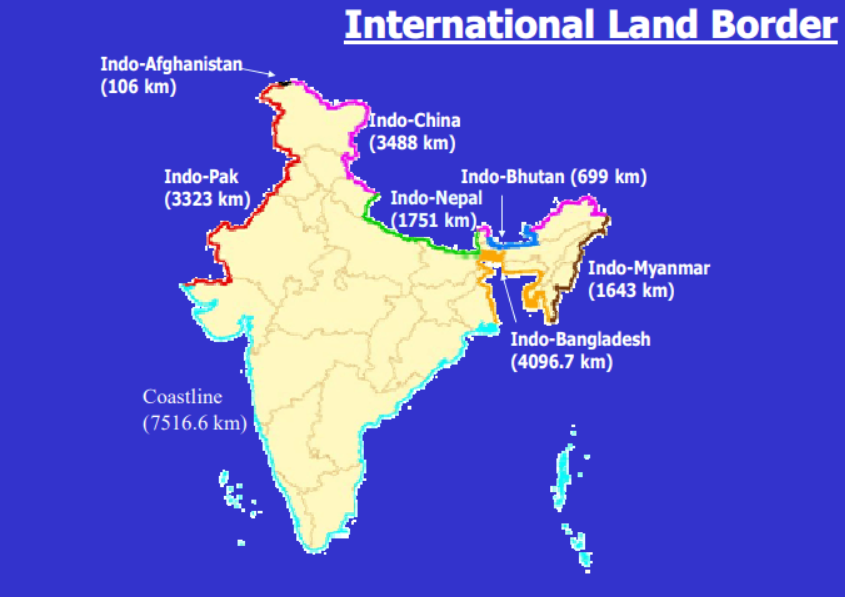
Why is Enhanced Border Management Critical for India?
- Cross-Border Terrorism: Persistent threats from Pakistan-based terror outfits (e.g., Lashkar-e-Taiba, Jaish-e-Mohammed) necessitate round-the-clock surveillance, particularly along the India-Pakistan border and Line of Control (LoC).
- For example, the 2016 Uri attack and the 2019 Pulwama attack were both carried out by these terror groups.
- The India-Pakistan border, stretching over 3,323 km, includes 744 km of the LoC and around 200 km of international border in Jammu and Kashmir—a region frequently targeted by infiltration and cross-border terrorism.
- Since 2021, over 30 terror-related incidents have been reported from the Jammu region.
- To Tackle Smuggling, Arms, and Narcotics Trade: India's porous borders, especially in Punjab, Jammu, and the Northeast, are often exploited for drug smuggling, arms trafficking, and counterfeit currency movement.
- Effective border management curtails the flow of illegal goods that fuel internal crime and insurgency.
- A recent example includes the busting of a cross-border drug cartel by Punjab police in March 2025, highlighting the issue posed by 'Death Crescent' to India.
- The Death Crescent includes Afghanistan, Iran, and Pakistan, which is a primary source of heroin trafficked into India
- To Facilitate Development in Border Areas: Border regions often remain underdeveloped due to security risks. Strengthening border infrastructure allows for the implementation of schemes like the Vibrant Villages Programme.
- It also plays a crucial role in countering China’s efforts to expand villages along the Line of Actual Control (LAC).
- To Strengthen National Sovereignty and Strategic Deterrence: Visible, well-managed borders act as a symbol of sovereignty.
- They help deter adversarial activities and project India’s firm control over its territory, especially in contested zones like J&K and Arunachal Pradesh (China recently claimed this territory in its newly released map).
What are India’s Existing Initiatives for Border Management?
- Comprehensive Integrated Border Management System (CIBMS): To ensure better situational awareness at all levels and enable a quick response to any situation along the India-Pakistan and India-Bangladesh borders, the CIBMS has been designed.
- It brings together manpower, sensors, communication networks, intelligence, and command control systems into one integrated setup.
- Integrated check posts (ICPs): ICPs at international borders aim to ensure smooth, secure, and efficient movement of people and goods across borders.
- Border Infrastructure Development: Under the Vibrant Villages Programme and Border Area Development Programme, infrastructure upgrades help in both defense and local development.
- Border Infrastructure and Management (BIM) Scheme: It aims to strengthen security along the country's international borders by implementing projects focused on developing border infrastructure, such as border fences, border roads, and other related facilities.
- Smart Fencing: A technologically advanced border security infrastructure is designed to strengthen surveillance and control in sensitive border areas.
- As part of this initiative, the Ministry of Home Affairs plans to construct a 100-kilometer Smart Fencing System along the India-Myanmar border.
| Read More: India's Border and Its Management |
Global Models of Border Surveillance
|
Country |
Border Surveillance Model |
Key Features |
|
USA |
Integrated Fixed Towers & SBInet |
Fixed and mobile video surveillance systems, thermal imaging devices, radar, ground sensors, and radio frequency sensors. |
|
Israel |
Smart Fence Technology |
AI-enabled systems, underground sensors, motion detection and facial recognition. |
|
China |
BeiDou Satellite-based surveillance |
Smart towers, satellite-linked border management. |
|
European Union |
EUROSUR |
Real-time monitoring using drones, satellites, and AI-based analysis. |
|
South Korea |
Demilitarized Zone Surveillance |
Heat sensors, seismic sensors, smart fences, and round-the-clock human surveillance with drone support. |
Note: Some countries, like the US and Israel have explored border walls to address security concerns and control illegal activities, such as the US-Mexico border wall and Israel's West Bank Barrier, aiming to curb illegal immigration and trafficking.
What are the Key Issues Associated with India's Plan for Tech Driven Border Security?
- Terrain Complexity and Customization Needs: India’s border with Pakistan spans deserts, marshlands, and hilly terrain, making a uniform surveillance model ineffective. Adapting technology to suit local conditions, especially in forests and mountains (Valley of Kashmir), remains a key challenge.
- Inter-agency Coordination Gaps: Effective border management requires seamless collaboration between the Border Security Force (BSF), Indian Army, Intelligence Bureau, local police, and central ministries.
- However, overlapping jurisdictions, lack of real-time intelligence sharing, and absence of a unified command structure often lead to delayed responses during infiltration or drone intrusions.
- Technological Reliability and Maintenance: High-tech surveillance equipment such as drones, and sensors require regular maintenance and specialist training.
- Harsh weather conditions (extreme heat in Rajasthan, snow and fog in J&K) often impair system performance.
- This raises questions about the sustainability and durability of equipment on the ground.
- Financial and Logistical Constraints: While the government has assured “no budget shortage,” the sheer scale of surveillance implementation entails high capital and operational expenditure.
- Efficient project management and strong vendor accountability are essential for the procurement, deployment, and lifecycle maintenance of equipment, especially in remote areas.
- Civil Liberties and Environmental Concerns: Increased surveillance must be balanced with privacy safeguards and ecological concerns.
- For instance, under the Forest (Conservation) Amendment Act, 2023, strategic projects within 100 km of the border are exempted from forest clearances, raising concerns about deforestation and displacement, especially in tribal and ecologically sensitive zones.
Indian Borders and the Forces Deployed
|
Border |
Deployed Forces |
|
India-Nepal Border |
|
|
India-Pakistan Border |
Border Security Force (BSF) |
|
India-China Border |
|
|
India-Bangladesh Border |
Border Security Force (BSF) |
|
India-Bhutan Border |
Sashastra Seema Bal (SSB) |
|
India-Myanmar Border |
|
|
India-Sri Lanka Maritime Boundary |
What Measures can India Adopt to Accelerate Tech Driven Border Security?
- Accelerated Deployment in Vulnerable Zones: Prioritize Jammu and Punjab sectors, where infiltration attempts have spiked.
- For example, the 2024 Poonch terror attack highlighted vulnerabilities in forested zones, stressing the urgency for electronic surveillance and drone-based reconnaissance in such high-risk areas.
- Public-Private Partnerships (PPP) and Indigenous Innovation: India should leverage startups under iDEX (Innovations for Defence Excellence) to develop cost-effective surveillance systems.
- For instance, ideaForge, a Mumbai-based drone manufacturer, has already supplied drones to the Indian Army and BSF for surveillance in rugged terrain.
- Use of AI and Data Analytics for Patrol Optimization: Expand models like Project Himshakti, which uses AI to process satellite imagery and predict cross-border movement in Eastern Ladakh.
- A similar approach can be used along the western border to enhance patrol planning and reduce surprise infiltrations.
- Unified Border Command for Coordination: Institutionalize an integrated command like the US Department of Homeland Security's Customs and Border Protection (CBP) model, which coordinates border forces, immigration, and surveillance under a central system.
- India can emulate this for better synergy among BSF, Army, CRPF, and intelligence agencies.
- Integration of Satellite Surveillance and GIS Mapping: India should expand the use of Cartosat for real-time border surveillance and leverage GSAT-7 (Rukmini) for enhanced communication in remote areas, ensuring seamless coordination among security forces.
- High-resolution satellite inputs can aid in mapping infiltration-prone zones and real-time tracking.
|
Drishti Mains Question: With reference to India’s border management challenges, critically assess the role of electronic surveillance in strengthening internal security. |
UPSC Civil Services Examination, Previous Year Questions (PYQs)
Mains
Q. The use of unmanned aerial vehicles (UAVs) by our adversaries across the borders. to ferry arms / ammunition, drugs, etc., is a serious threat to the internal security. Comment on the measures being taken to tackle this threat. (2023)
Q. For effective border area management, discuss the steps required to be taken to deny local support to militants and also suggest ways to manage favourable perception among locals. (2020)
Q. Border management is a complex task due to difficult terrain and hostile relations with some countries. Elucidate the challenges and strategies for effective border management. (2016)
Q. How illegal transborder migration does pose a threat to India’s security? Discuss the strategies to curb this, bring out the factors which give impetus to such migration. (2014)
Q. How far are India’s internal security challenges linked with border management, particularly in view of the long porous borders with most countries of South Asia and Myanmar? (2013)


International Relations
Shift from Globalism to Regionalism
For Prelims: Globalism, Regionalism, Minilateralism, European Union, ASEAN, SAARC, BIMSTEC, IORA, BBIN (Bangladesh-Bhutan-India-Nepal) and the Kaladan Multi-Modal Transit Transport Project, Indian Ocean Region, International Buddhist Conclave, revival of Nalanda University, Belt and Road Initiative (BRI), Neighbourhood First Policy.
For Mains: India’s significance in South Asia, Key Issues Hindering India's Active Engagements in South Asia.
Why in News?
The Global Order is shifting from universalist globalism to interest-driven regionalism and minilateralism, as nations increasingly prefer smaller coalitions over multilateral institutions.
How is the World Shifting from Globalism to Regionalism?
- Global Conflicts and Institutional Paralysis: Ongoing conflicts like the Russia-Ukraine war and the Israel-Gaza crisis have exposed the limited efficacy of global governance structures.
- UN Security Council deadlocks, often due to great power rivalries, have eroded faith in multilateral conflict resolution.
- Rise of Regionalism and minilateralism: Regionalism is marked by geographically and culturally aligned partnerships, while minilateralism involves smaller, interest-based groups like the QUAD, and I2U2 for focused cooperation.
- The EU evolved from the European Economic Community, and initiatives like ASEAN, SAARC, BIMSTEC, and IORA, reflect regionalism, though with varied success.
- Emerging flexible coalitions like QUAD, BRICS, and IMEC promote strategic autonomy, faster decision-making, and targeted cooperation in areas such as security, technology, and infrastructure.
- Reassertion of National Sovereignty: The Covid-19 pandemic revealed global supply chain vulnerabilities and unequal vaccine access, reinforcing the idea that national preparedness trumps global solidarity.
- Countries began to prioritize self-reliance, health sovereignty, and economic resilience over global integration.
- Historical Disillusionment: Developing countries, including India, have criticized the unequal power dynamics in global institutions like the WTO, IMF, and World Bank. The lack of reforms has led nations to seek alternative platforms like BRICS and AIIB.
- India’s Strategic Recalibration: India is actively engaging in regional initiatives like BIMSTEC,and IORA, while also strengthening minilateral engagements.
- This reflects a pragmatic shift in foreign policy from idealistic multilateralism to interest-driven regional cooperation and strategic partnerships.
What is India’s Role in Regional Integration?
- Anchor of Regional Connectivity: India plays a central role in promoting cross-border infrastructure and trade corridors like BBIN (Bangladesh-Bhutan-India-Nepal) and the Kaladan Multi-Modal Transit Transport Project to improve economic and physical connectivity in South Asia.
- Security Provider and Humanitarian Responder: India’s role as a net security provider through naval presence in the Indian Ocean Region and disaster relief missions like Operation Maitri (Nepal) and Operation Brahma (Myanmar) strengthens its strategic credibility and deepens regional trust.
- Trade and Investment Hub: As the largest economy in South Asia, India serves as a trade and investment anchor for neighbouring countries, offering preferential trade arrangements and extending lines of credit and development assistance.
- In 2023, India's trade with ASEAN reached approximately USD 101.9 billion, accounting for 2.86% of total ASEAN trade.
- Shared Cultural and Democratic Values: India promotes shared cultural and democratic values through initiatives like the International Buddhist Conclave, revival of Nalanda University, and support to post-conflict democracies, reinforcing its civilizational influence.
- Projects like the Buddhist Circuit and South Asian University foster regional cultural ties, enhance mutual understanding, and help counter anti-India narratives in neighboring countries.
What are the Key Challenges to India’s Regional Integration Efforts?
- Perception of Hegemony: Smaller South Asian nations often perceive India's dominance as overbearing, leading to mistrust and reluctance in embracing India-led initiatives, thereby limiting the effectiveness of regional cooperation.
- Bilateral Political Tensions: The enduring Kashmir dispute with Pakistan and unresolved border tensions with China, such as the 2020 Galwan Valley standoff, continue to strain India's regional relations.
- These conflicts often trigger military confrontations and diplomatic deadlocks, diverting focus from collaborative regional development initiatives.
- Ongoing hostilities and strained ties have weakened SAARC and hindered regional multilateralism.
- Asymmetry in Economic Capabilities: South Asia’s vast economic disparities hinder policy alignment and equitable integration. Intra-regional trade remains low at around 5%, far below ASEAN’s 25%.
- India-Pakistan tensions have stalled SAARC, while initiatives like BBIN and projects like the India-Nepal Pancheshwar Multipurpose Project continue to face significant delays.
- China’s Strategic Entrenchment: China's growing presence in South Asia through the Belt and Road Initiative (BRI) and infrastructure diplomacy poses a strategic counterweight to India’s regional leadership, complicating India's integration agenda.
Way Forward
- Revive and Reform Regional Institutions: India should spearhead the institutional revitalization of BIMSTEC and IORA through regular summits, greater funding, and functional secretariats, while promoting sector-specific cooperation in trade, energy, disaster management, and digital connectivity.
- Strengthen Sub-Regional Partnerships: India should deepen engagement through platforms like BBIN and promote functional minilaterals focused on health, education, and green energy, especially when SAARC consensus is lacking.
- Boost Regional Trade and Connectivity: Enhancing trade through simplified customs, shared standards, and integrated transport and digital infrastructure can foster economic interdependence and regional stability.
- Foster Inclusive Engagement:To counter rising external influence, India must lead with transparent development aid, cultural diplomacy, and people-centric initiatives under the Neighbourhood First Policy.
|
Drishti Mains Question: Critically examine India’s evolving role in fostering regional integration and navigating strategic coalitions to safeguard its national and neighbourhood interests. |
UPSC Civil Services Examination, Previous Year Questions (PYQs)
Prelims:
Q. With reference to “Look East Policy” of India, consider the following statements: (2011)
- India wants to establish itself as an important regional player in East Asian affairs.
- India wants to plug the vacuum created by the termination of the Cold War.
- India wants to restore the historical and cultural ties with its neighbors in Southeast and East Asia.
Which of the statements given above is/are correct?
(a) 1 only
(b) 1 and 3 only
(c) 3 only
(d) 1, 2 and 3
Ans: (d)
Mains:
Q. “China is using its economic relations and positive trade surplus as tools to develop potential military power status in Asia”. In the light of this statement, discuss its impact on India as her neighbour. (2017)


Important Facts For Prelims
10th Anniversary of Pradhan Mantri Mudra Yojana
Why in News?
On 8th April 2025, the Pradhan Mantri Mudra Yojana (PMMY) completed 10 years since its launch in 2015. It has been pivotal in providing collateral-free financial support to micro and small enterprises (MSEs) across India.
What are the Key Achievements of PMMY?
- Credit Outreach: Since 2015, over Rs 32.61 lakh crore has been disbursed through 52 crore loans, including 100+ million first-time borrowers.
- MSME lending rose from Rs 8.5 lakh crore (FY14) to Rs 27.25 lakh crore (FY24), with its share in bank credit growing from 15.8% to nearly 20%.
- Inclusive Financial Access: Women constitute 68% of PMMY beneficiaries. From FY16 to FY25, per woman loan disbursement rose at a CAGR of 13% and deposits at 14%.
- Half of the PMMY accounts are held by SC, ST, and OBC entrepreneurs, and 11% by minorities, as per SBI.
- Pandemic Support: A 2% interest-subvention on Shishu loans under Atma Nirbhar Bharat helped prevent defaults and protect livelihoods during Covid-19.
- Maturing Credit Demand: More borrowers are moving from small Shishu loans (declined from 92% to 63%) to higher Kishor (rose from 5.9% to 44.7%) and Tarun categories.
- Regional Reach: Tamil Nadu, UP, and Karnataka lead in total PMMY disbursals, Tripura, Odisha, and Tamil Nadu top in per capita loans.
- J&K leads UTs in loan disbursal, while Bihar and West Bengal reflect untapped potential.
What is Pradhan Mantri Mudra Yojana (PMMY)?
- About: MUDRA (Micro Units Development and Refinance Agency) is a flagship scheme of the Government of India, launched in 2015 to provide affordable, collateral-free institutional credit through Member Lending Institutions (MLIs).
- Key Features:
- Type: Central Sector Scheme
- Funding Provision: Loans are extended through Member Lending Institutions (MLIs) such as Scheduled Commercial Banks, RRBs, NBFCs, and MFIs.
- Refinancing: Managed by MUDRA Ltd. (Micro Units Development & Refinance Agency), which refinances MLIs but does not lend directly to borrowers.
- Credit Guarantee: Provided via the Credit Guarantee Fund for Micro Units (CGFMU), set up in 2015.
- Other Benefits:
- No processing fees, no collateral, easy access to credit, and flexible repayment terms.
- MUDRA Card, a debit card issued against the loan account to meet working capital needs.
- Loan Categories:
UPSC Civil Services Examination Previous Year Question (PYQ)
Q. Pradhan Mantri MUDRA Yojana is aimed at (2016)
(a) bringing the small entrepreneurs into formal financial system
(b) providing loans to poor farmers for cultivating particular crops
(c) providing pensions to old and destitute persons
(d) funding the voluntary organizations involved in the promotion of skill development and employment generation
Ans: (a)


Important Facts For Prelims
GenomeIndia
Why in News?
Nature Genetics published findings from the GenomeIndia project, which sequenced the whole genomes of around 10,000 individuals from 85 distinct populations groups (32 tribal and 53 non-tribal), covering major ethnic groups across India.
- The study identified 180 million genetic variants, including 130 million on autosomes (non-sex chromosomes) and 50 million on sex chromosomes (X and Y).
- Some variants are disease-linked, some are rare, others are unique to India or specific communities.
What is the GenomeIndia Project?
- About: Launched in 2020 by the Department of Biotechnology (DBT), the Genome India Project aims to map the genetic diversity of the Indian population.
- Over 20 leading institutions, including Indian Institute of Science's Centre for Brain Research, Centre for Cellular and Molecular Biology, and National Institute of Biomedical Genomics, collaborated to sequence 10,000 genomes in the project’s first phase.
- The core objective is to build a comprehensive Indian reference genome.
- IBDC: The genome data is stored in the Indian Biological Data Centre (IBDC), which is India’s first national life science data repository, established at Regional Centre of Biotechnology (RCB), Faridabad with support from DBT and in collaboration with National Informatics Centre (NIC).
- Significance: The initiative addresses the underrepresentation of Indian genomes in global databases, thereby enhancing India's standing in international genomics research.
What are the Other Key Genome Sequencing Initiatives?
- IndiGen Programme: Launched by Council of Scientific & Industrial Research (CSIR) in 2019, successfully sequenced the whole genomes of 1029 Indians and identified 55.9 million single nucleotide variants, of which 18 million (~32%) were unique to Indian genomes.
- One Day One Genome Initiative: Launched in 2024 by DBT, aims to sequence and publicly release one bacterial genome daily to showcase India's microbial diversity.
- Global Alliance for Genomics and Health (GA4GH): Established in 2013, GA4GH is a non-profit international alliance that sets standards to promote the use of genomic data within a human rights framework.
- Human Genome Project: It was coordinated by the US and operated from 1990 to 2003, providing researchers with fundamental information about the genetic makeup of the human organism.
What is Genome Sequencing?
- Genome: It refers to the entire set of genetic material (Deoxyribonucleic acid (DNA) in most organisms; Ribonucleic acid (RNA) in some viruses) present in an organism.
- It contains all the biological instructions required for an organism’s development, functioning, and survival.
- Genome Sequencing: It is the process of determining the complete sequence of nucleotide bases (Adenine (A), Cytosine (C), Guanine (G), Thymine (T), and Uracil (U)) in an organism’s genome.
- It can include whole-genome, partial genome, or targeted gene sequencing
- Whole Genome Sequencing (WGS): Used to determine the complete DNA sequence of an organism's genome at a single time, identifying the exact order of all the nucleotide bases across the entire genome.
- It provides the most comprehensive genetic blueprint of an organism.
UPSC Civil Services Examination, Previous Year Questions (PYQs)
Q1. With reference to agriculture in India, how can the technique of ‘genome sequencing’, often seen in the news, be used in the immediate future? (2017)
- Genome sequencing can be used to identify genetic markers for disease resistance and drought tolerance in various crop plants.
- This technique helps in reducing the time required to develop new varieties of crop plants.
- It can be used to decipher the host-pathogen relationships in crops.
Select the correct answer using the code given below:
(a) 1 only
(b) 2 and 3 only
(c) 1 and 3 only
(d) 1, 2 and 3
Ans: (d)


Rapid Fire
Dire Wolves
A US-based biotechnology company (Colossal Biosciences) has claimed to have genetically engineered wolf pups (Romulus, Remus, and Khaleesi) with traits resembling the long-extinct dire wolves (Aenocyon dirus).
Genetically Engineered Wolf Pups:
- Scientists used ancient DNA from 13,000-72,000-year-old dire wolf fossils to identify traits like white coats and thick fur.
- By comparing dire wolf genomes with modern canids (wolves, jackals, foxes), they found 99.5% DNA similarity with gray wolves.
- Using CRISPR, they edited 20 gene sites in gray wolf cells, inserted them into domestic dog egg cells, and implanted embryos into dog surrogates.
- Out of 8 transfers, 3 genetically engineered pups were born after a 62-day gestation.
- Different From Extinct Dire Wolves:
- The gene-edited pups are not exact genetic replicas of extinct dire wolves. Despite a 99.5% DNA similarity with gray wolves, millions of base pair differences exist.
- This experiment classified the recreated animals as dire wolves using the morphological species concept- based on physical resemblance, not precise genetic or evolutionary lineage.
Dire Wolf
- They were large prehistoric canines that went extinct around 13,000 years ago.
- Native to southern Canada and the US, they were larger than modern gray wolves, standing 3.5 feet tall, over 6 feet long, and weighing up to 68 kg, with likely white coats.
- They hunted large prey like bison and horses and likely went extinct due to prey depletion and human interference.
| Read More: Indian Grey Wolf |


Rapid Fire
Kashmir’s Spring Blooms
Kashmir’s distinct agroclimatic conditions nurture a wide variety of endemic plants, especially spring blooms, which are crucial for the valley’s biodiversity and cultural heritage.
- Distinct Agroclimatic Conditions: Kashmir’s altitudinal variations (1,600m to 4,500m) support diverse spring blooms like Colchicum luteum (veer kaum), Sternbergia vernalis (goul tour), and Viburnum grandiflorum (kulmansh) , thriving due to its harsh winters and mild springs.
- Ecological and Cultural Significance: These spring blooms provide vital ecosystem services by supporting pollinators essential for fruit tree pollination.
- They also have cultural significance, being used medicinally and deeply rooted in Kashmiri folklore.
- Threats: Unsustainable development, deforestation, and human encroachment threaten these spring blooms.
- Climate change is altering blooming patterns, causing premature flowering, disrupting natural seasonal cycles.
- Despite their importance, there are no dedicated conservation programs for spring blooms. Current protection comes from national parks like Salim Ali and wildlife sanctuaries like Gulmarg Wildlife Sanctuary.
| Read more: Titan Arum Flower |


Rapid Fire
“Blue Category” for Industries
The Central Pollution Control Board (CPCB) has introduced a revised classification system for industries, which includes a new "Blue Category" for essential environmental services, aiming to incentivize sectors like waste management and biomining.
- Classification Methodology: The classification is based on the Pollution Index (PI) by CPCB, which classifies industries based on their pollution potential, considering air, water, and waste pollutants. The categories include Red (PI > 80), Orange (55 ≤ PI < 80), Green (PI < 25), and Blue (for essential environmental services).
- Blue Category: Covers industries like landfill maintenance, biomining, and waste-to-energy plants. They will receive a two-year extension for their consent to operate as an incentive for environmental management.
- Despite a high PI (97.6), waste-to-energy plants are categorized as Blue due to the essential environmental service they provide.
- CBG (Compressed Biogas) plants, depending on their feedstock, are also eligible for Blue Category status.
- CPCB: It is a statutory organisation, constituted under the Water (Prevention and Control of Pollution) Act, 1974. Further, CPCB was entrusted with the powers and functions under the Air (Prevention and Control of Pollution) Act, 1981.
- It provides technical services to the Ministry of Environment, Forests, and Climate Change under the Environment (Protection) Act, 1986.
| Read more: CPCB's New Guidelines for India's Stone Crusher Sector |


Rapid Fire
India Skills Accelerator
The Ministry of Skill Development and Entrepreneurship (MSDE), in collaboration with the World Economic Forum (WEF), launched the India Skills Accelerator (ISA).
- ISA is a national public-private collaboration platform aimed at fostering cross-sectoral cooperation to address complex challenges in India’s skilling ecosystem, with a focus on innovation, knowledge sharing, and policy reform.
- It supports India’s demographic dividend and aims to make India the Skill Capital of the World.
- With 65% of organizations citing skill gaps as a major barrier, the initiative aims to close these gaps through inclusive upskilling, reskilling, and aligning education with industry needs.
- Global Alignment: The initiative leverages insights from the WEF’s Future of Jobs 2025 report to maintain competitiveness in the global job market.
| Read more: Future of Jobs Report 2025 |



